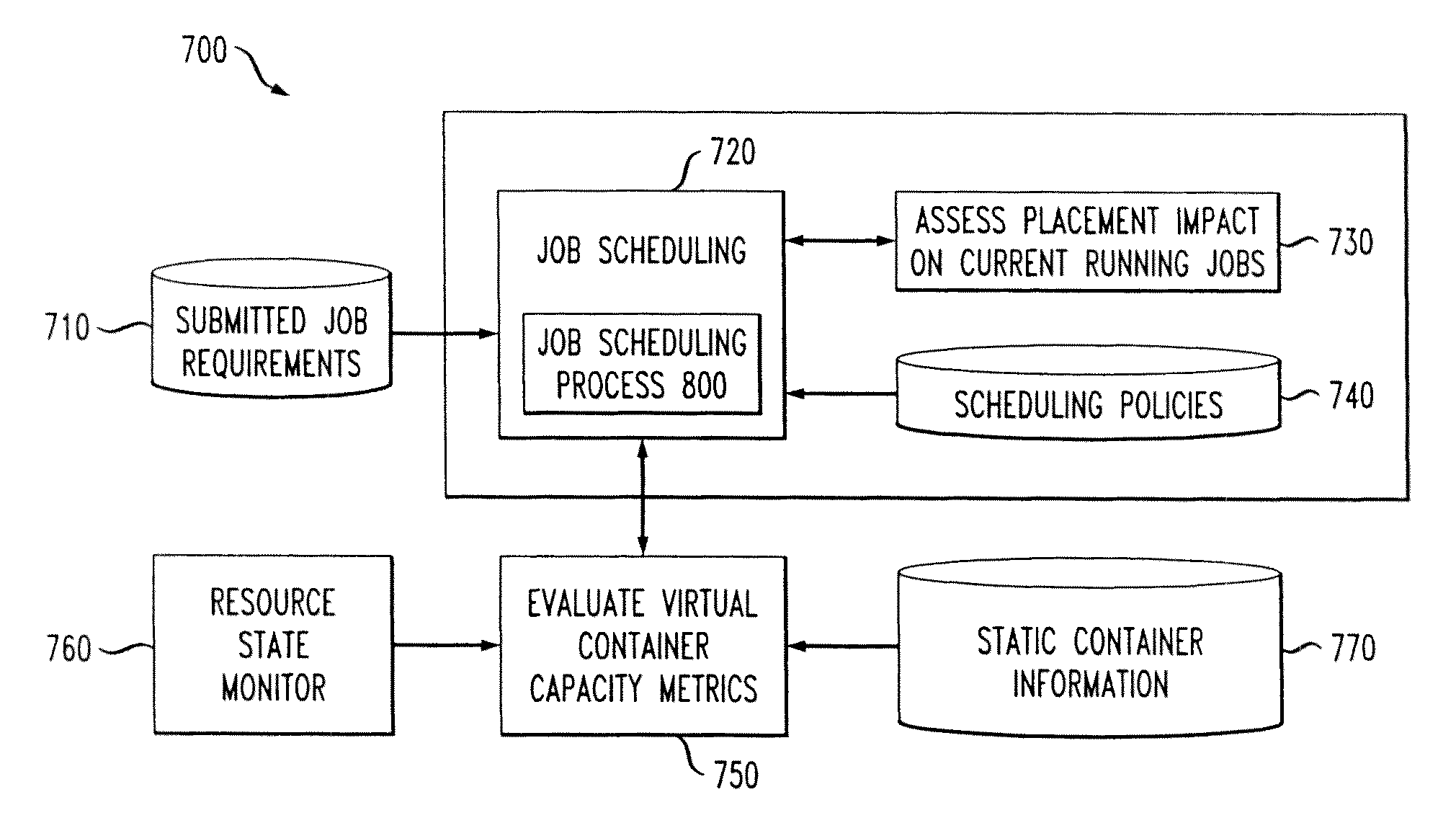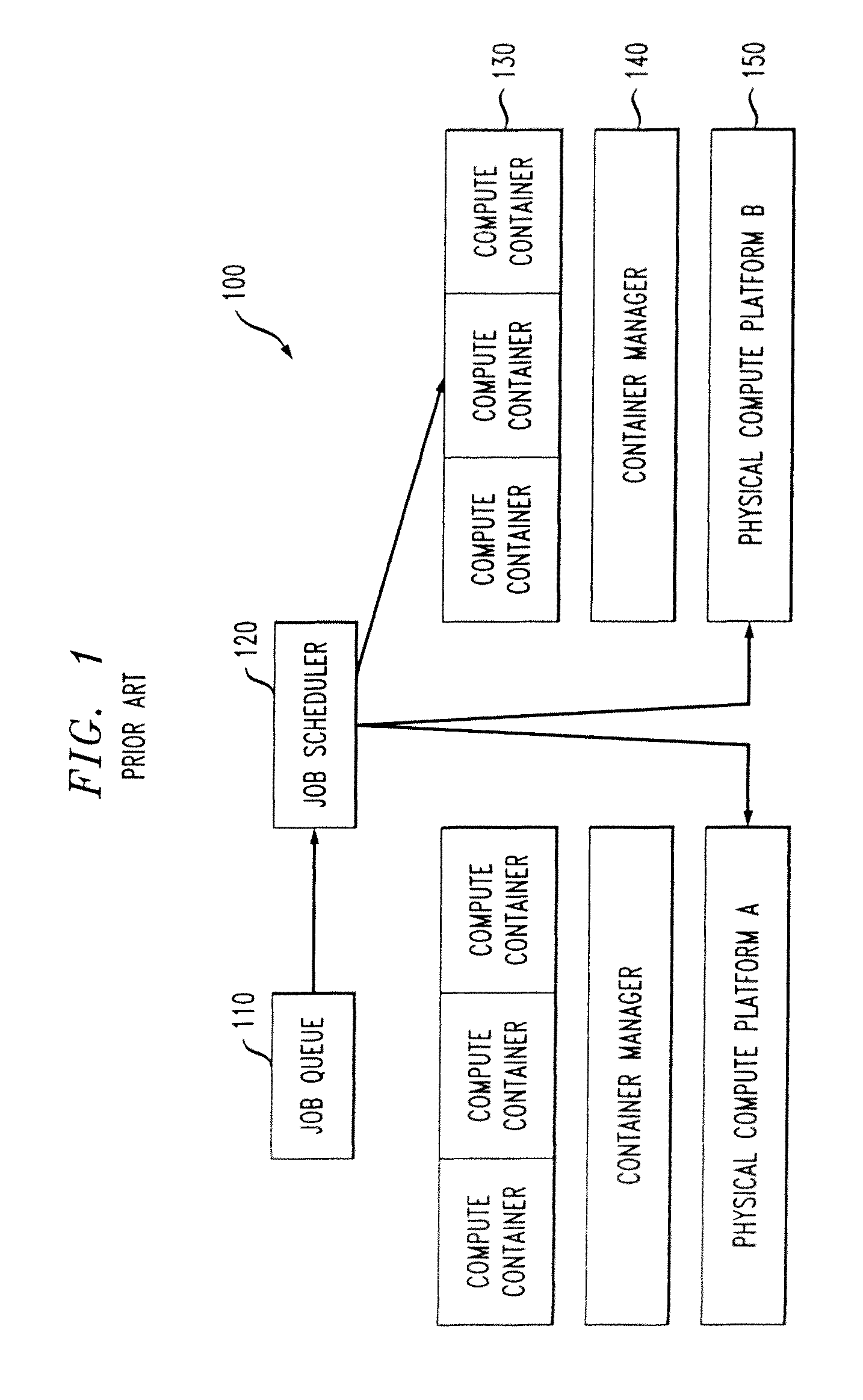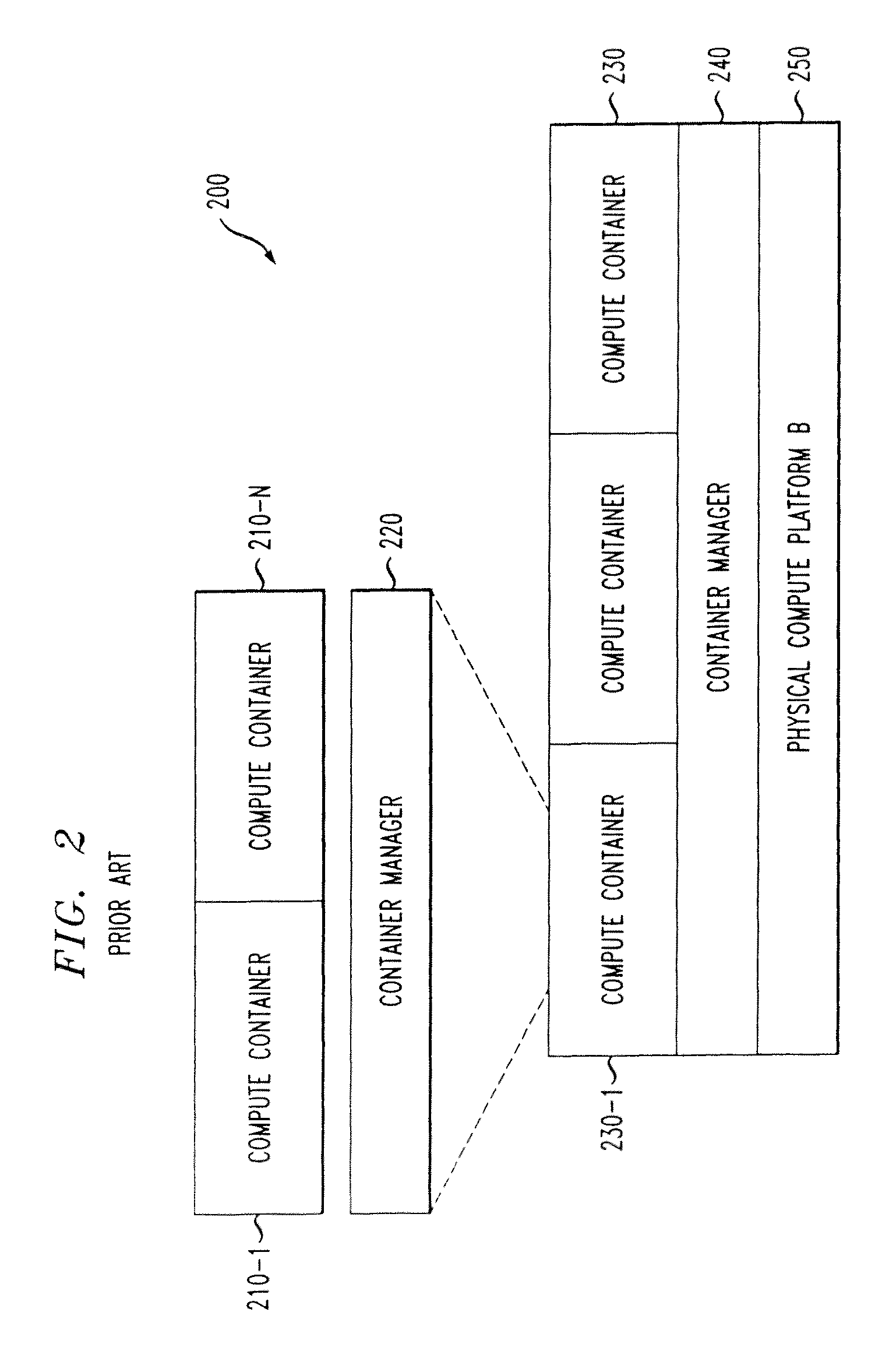Scheduling a Parallel Job in a System of Virtual Containers
a virtual container and parallel job technology, applied in the field of electrical, electronic and computer arts, can solve the problems of increasing the complexity of the scheduling problem, the evaluation of resource capacity is particularly difficult in a multi-container environment, and the difficulty of scheduling parallel jobs to a collection of virtual containers, so as to maximize the current utilization and minimize the response time of parallel jobs
- Summary
- Abstract
- Description
- Claims
- Application Information
AI Technical Summary
Benefits of technology
Problems solved by technology
Method used
Image
Examples
Embodiment Construction
[0023]The present invention provides methods and apparatus for scheduling a parallel job in a system of virtual containers, where there is elasticity and competition among containers. According to one aspect of the invention, the disclosed techniques take into account the elasticity and competition of virtual compute containers. According to another aspect of the invention, the disclosed techniques take into account the impact of the elasticity and competition on the workloads of serial and parallel jobs. Generally, a parallel job is comprised of a plurality of tasks assigned to a plurality of containers for concurrent execution.
[0024]FIG. 1 provides an overview of a conventional exemplary job scheduler 100. As shown in FIG. 1, one or more jobs stored in a job queue 110 are processed by a job scheduler 120 to assign each given job to one or more available physical resources, such as physical compute platforms 150. The physical resources 150 may comprise, for example, processing core...
PUM
 Login to View More
Login to View More Abstract
Description
Claims
Application Information
 Login to View More
Login to View More - R&D
- Intellectual Property
- Life Sciences
- Materials
- Tech Scout
- Unparalleled Data Quality
- Higher Quality Content
- 60% Fewer Hallucinations
Browse by: Latest US Patents, China's latest patents, Technical Efficacy Thesaurus, Application Domain, Technology Topic, Popular Technical Reports.
© 2025 PatSnap. All rights reserved.Legal|Privacy policy|Modern Slavery Act Transparency Statement|Sitemap|About US| Contact US: help@patsnap.com



